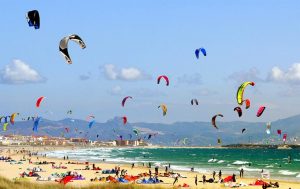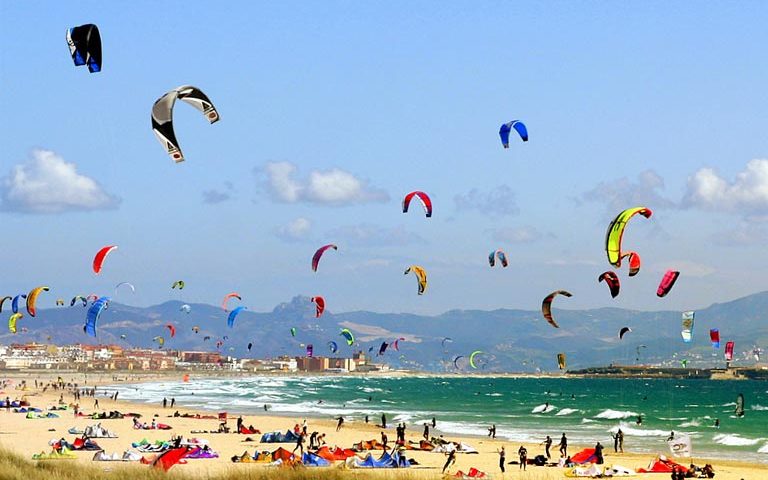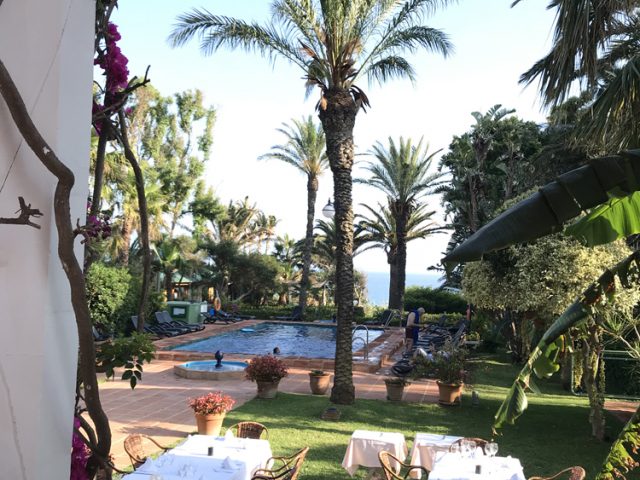- Have any questions?
- +34 951 273 575
- info@allaboutandalucia.com
Romans and moor! Tarifa uncovered.

Spain home to almost half of Europe’s most visited tourist sites, including Andalucia and Mallorca
July 10, 2017Seeing the light of the Costa de la Luz
July 14, 2017THE pungent scent of tuna is wafting down the street from the salting factory, while toga-clad townsfolk make their way to the forum to shop and socialise.
It’s mid morning, and may- be later – in the heat of the day – they will duck for cover and chill out at the town’s spa, punish a few slaves and then treat the wife to a show at the theatre.
Picture the scene at Baelo Claudia 1,800 years ago, at that time one of Spain’s most important Roman settlements. The ruined Roman city on the beachfront at Bolonia, a ten minute drive west of Tarifa, had a booming economy back in 2AD, based on its fish salting industry.
Today, at this reconstructed living museum, you can walk the cobbled streets, explore old Roman villas or declaim a few stanzas by Seneca from the stage of the ancient amphitheatre. Shut your eyes and you can almost believe you’ve been beamed back a couple of centuries.
Stepping through the town gate and exploring this once magnificent Roman city is more than enough to set the imagination racing. The Iberian Peninsula’s biggest Roman city – complete with walls, aqueducts, baths, temples, forums, villas and more – is a rather special place. It is designed to be taken slowly, at a stroll, while breathing in the fresh Atlantic air as the wind wafts you gently through the ruins.
Baelo’s main road – decumanus maximus – runs from east to west, connecting two large town gates. From here a well-signposted route leads you around the Roman settlement, with plenty of information in English to accompany the strikingly well-preserved ruins.
The town had really started growing in 2AD, after a product, known as garum, made in Baelo, took off among the chattering classes of Rome. Made out of fish guts it was a pungent, but allegedly tasty addition to any meal and the whole area became dedicated to its production, with Roman ships arriving and departing on a daily basis for Italy, loaded up with the magic product.
Nowadays its big sister Tarifa makes its money from a different sort of natural produce: the wind! ‘Breathtaking’’ and ‘windy’ are certainly two adjectives often used to describe trendy Tarifa – the wind and kite surf capital of Europe. Glimpsing its long crescent beach of pristine white sand atop the winding up-hill road from Algeciras, flanked by battalions of flailing wind turbines, it’s not hard to see why.
Here, where the Atlantic meets the Mediterranean , kite surfers dominate the skyline. It’s clearly these water sports lovers who create the laid-back vibe that makes Tarifa a favourite party town. Its pretty, cobbled streets teem with life and the place comes into its own after dark, when twinkling bar signs light up like stars on every corner.
One of the best things about Tarifa is the view of the Gibraltar Strait, hemmed in between Europe and Africa, with the beautiful Mediterranean to the east and the vast, wild Atlantic to the west. Take a walk along the narrow walkway separating the two waters out to Isla de las Palomas and then stroll up Los Lances beach to enjoy a drink or supper at one of its hip chiringuitos.
It is not just the wind that attracts tourists to this kitesurfing Mecca. There are whale watching and scuba diving trips and oodles of opportunities for retail therapy. Indeed, Tarifa has an abundance of quirky shops selling handicrafts, leather bags, jewellery and musical instruments, as well as pavement cafes touting freshly-baked treats. There’s a small town beach, Playa Chica, lapped by the Med (and great if the Poniente is blowing a hooley). 
But the focal point is Calle Alameda, a lively Spanish walkway lined with good restaurants, including the newly-refurbished Petit Bistro for classy French cuisine. There’s frequently live music here, and an extensive book market to peruse.
Across the road the refurbished grand fort, overlooking the bustling harbour, has recently reopened to the public, providing wonderful views of the Strait. This little fishing town was the first point of the Moorish invasion of southern Spain in AD711, when the Berber chief landed from Ceuta with 400 foot soldiers and 100 horsemen.
They built the fort later, in 960AD. It is a lovely ride from here to Bolonia, through stunning undeveloped countryside and pine fronded beaches, with kites bobbing up above on windy days. There is a great selection of fantastic hotels here, the oldest and most established being the Hurricane.




